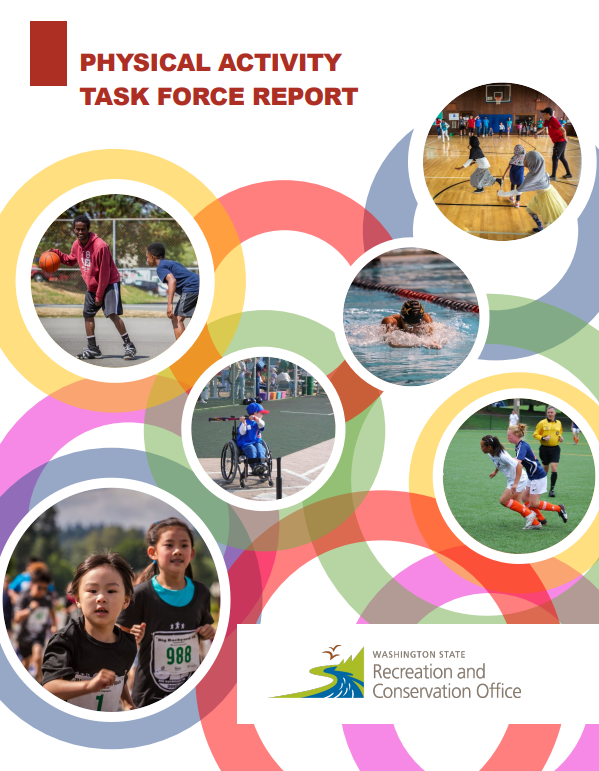State Task Force Recommends Increased Sharing of School and Community Athletic Facilities
News Release from the Washington State Recreation & Conservation Office
For Release: February 8, 2022OLYMPIA–A statewide task force commissioned by the Washington State Legislature is recommending increased sharing of school and community athletic facilities as a way to increase physical activity for youth, especially those underserved.
 Kids in Washington are not moving nearly enough, the task force noted in its new report. Before the pandemic, only about 24 percent of youth in sixth through twelfth grades were getting an hour of physical activity daily, the amount recommended by the Centers for Disease Control and Prevention to maintain physical and mental fitness. That percentage has remained about the same since 2012 and is slightly below the national average of 28 percent. The problem is worse for youth of color, girls, those from lower income families, immigrant youth and those with physical disabilities and long-term health problems.
Kids in Washington are not moving nearly enough, the task force noted in its new report. Before the pandemic, only about 24 percent of youth in sixth through twelfth grades were getting an hour of physical activity daily, the amount recommended by the Centers for Disease Control and Prevention to maintain physical and mental fitness. That percentage has remained about the same since 2012 and is slightly below the national average of 28 percent. The problem is worse for youth of color, girls, those from lower income families, immigrant youth and those with physical disabilities and long-term health problems.
“Studies have shown that when kids exercise, their health improves. So does their school attendance and mental well-being,” said Gov. Jay Inslee. “Kids who don’t have those opportunities are more likely to live shorter lives with greater health care costs and fewer chances to succeed. We must look for innovative ways to get more kids exercise and to get the most out of our existing facilities.” In the report, the task force focused on ways to strengthen shared-use agreements, which are agreements between school districts, government agencies or other organizations that allow community access to its facilities. While most schools in the state have shared-use agreements, the report noted that community and user groups find it difficult to access schools, which has created broad, pent-up demand for access to spaces for recreation.
The task force made six recommendations:
- Establish three new policies in statute: 1) a policy that designates schools as community hubs or civic centers; 2) a model policy supportive of schools as community hubs; 3) a policy that offers financial incentive to school districts that adopt and implement the model policy.
- Create a communications campaign to help school leaders and policy makers understand that recognizing schools as community assets and connecting them to community needs will help pass bonds and levies.
- Fund four pilot shared-use projects.
- Change state grant criteria and review processes to embed shared-use and equitable facility access.
- Use the newly created Athletic Fields and Facilities Inventory as a planning tool to provide information on local assets and inform needs.
- Fund a statewide study to explore the patterns associated with declines and inequitable gaps in youth physical activity and the associated costs on education, juvenile justice, health care and economic productivity.
“Shared-use agreements have the potential to give underserved youth access to more places where they can improve their overall wellness,” said Lydia Faitalia, a member of the state’s Commission on Asian Pacific American Affairs and the task force. “We need to hold state and local governments accountable to ensure shared-use agreements provide equitable and inclusive access.”
The task force’s report may be found on the State Recreation and Conservation Office’s website.
